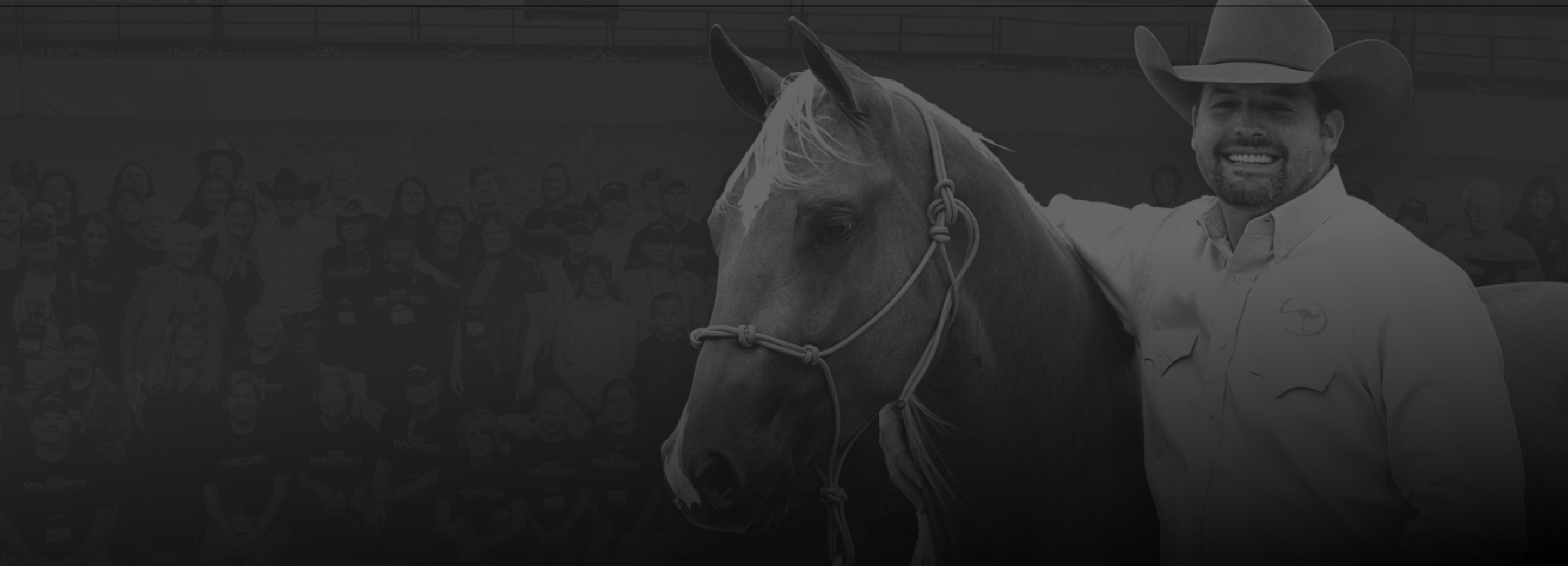Clinton Anderson from Downunder Horsemanship has developed a way to train horses, regardless of their past problems or traumas. It begins with training the owners to gain their horse’s respect and understand how to control them properly. Join Clinton on his weekly endeavors of tackling some of the most challenging situations with problem horses and problem owners. This week, we hear about a valuable lesson learned from Clinton—always triple-check your cinch.
One of the most valuable lessons this horseman learned from Clinton was what he heard on his first day of work. They were walking by the arena as a group of US Academy students getting shown around the place, when they saw Clinton on the saddle. In the middle of his ride, Clinton stopped the group and asked, “What’s the most important thing you need to do before you get on a young horse?” The students were in the middle of a colt sorting clinic, so it was actually quite fitting at the time. Everyone kind of stammered. They were a bit thrown off guard and trying to figure out what he was talking about. Before anyone could answer, Clinton cut them off and said, “Double and triple-check the cinch before you get on a horse. This doesn’t apply to just a young horse; it applies to any horse—always check before you get on. Your entire life is riding on that equipment. If the saddle goes under his belly with you on him, it’s a recipe for disaster.”
Just imagine what could happen. It’s a big wreck, okay? Especially if you actually get hung up while it’s under his belly. It’d result in a real nightmare for both you and the horse. So, in general, even when you’re just starting to get a young horse ready, you need to make sure that you get in the habit of checking. This way, you’ll be confident that if your horse were to go and do something silly or unpredictable, you’d know that the saddle is going to stay on because you triple-checked the cinch. If not, you could put yourself in danger, and it’ll be a surefire way to wreck a young horse’s confidence.
The cinch gives you stability, and it gives your horse confidence that the saddle won’t roll under his belly. Otherwise, you may find yourself in a situation where your horse is bucking, kicking, panicking, and crashing into the fence—all because you didn’t do your job properly. So, before you get on, if you’re ever in any sort of doubt whatsoever, triple-check that cinch again. It’ll save you a lot of trouble in the long run.
Clinton Anderson has devoted the past 20 years to creating the best tools and videos available to horsemen worldwide. Unfortunately, you can’t bring your TV into the arena to watch videos. That’s why Clinton and his team have been hard at work developing a new platform to deliver the training in a whole new way that brings 20 years of horsemanship and puts it in the palm of your hand. Now, you can access the mobile method and get everything at the touch of a finger.
Always have access to the Downunder method, even when you’re on the go or at the barn. The Downunder Horsemanship app gives you access to your digital training kits and lets you download videos and training content directly to your mobile device or view them on your computer. The Downunder Horsemanship app also offers over 86 hours of free in-depth training content. No Worries Club members will have access to Clinton’s ever-growing training library and many members-only features and information. The best part is that you can view and interact with each lesson on your mobile device or computer, giving you ultimate access to the method anytime and anywhere.
To learn more about the Clinton Anderson training method, become a member of the No Worries Club, or get information on any of the products seen on our show, head over to our homepage and download the Downunder Horsemanship app today!

Master Your horsemanship Skills
Like these tips? Join the No Worries Club and hone your skills with thousands of hours of Clinton’s easy, step-by-step method horse training videos.



